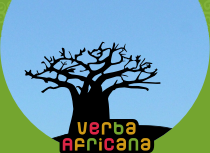Background information
The slufay performance on video was recorded in 2005 in Kwermusl, Mbulu district, Tanzania. The performer is Aako Shauri. The audio one in the subsections was recorded in 1987 in Hhaylotto and the performer is Hhawu Tarmo.
Hans Stoks, Matthijs Blonk and Maarten Mous were visiting the family of Ephraim Boniface Neema, where Ephraim had arranged a local folklore group that had just performed in the capital, Dar es Salaam, for the national holiday celebrations. The group requested to video record all elements of Iraqw verbal art, and this slufay was performed as a part of this request.
The transcription and translation was completed in December 2015 and 2016, with help from Yohana Simon Domnick and Bless Hillu, under the guidance of Maarten Mous. This was checked again in 2018 by Basilisa Hhao.
Further References
The information on this site is mostly from Beck & Mous (2014). Other sources on slufay include: Rekdal (1999) contains a chapter on the ritual essence of slufay and its central role in forming history. Hagborg (2001:94-111) presents slufay extensively and comes to its central and dominant structure of meaning consisting of prosperity against poverty, inside against outside, past against present, tradition against non-tradition, peace against conflict, elders against youth. Snyder (2005) presents the slufay in her final chapter entitled “Praying for Harmony”. Thornton (1980) illustrates many points in his analyses with quotes from Iraqw verbal arts, often excerpts from slufay.
Beck, Rose-Marie and Maarten Mous 2014 Iraqw slufay and the power of voice. In From the Tana River to Lake Chad, Research in African Oratures and Literatures. In memoriam Thomas Geider, ed. by Hannelore Vogele, Uta Reuster-Jahn, Raimund Kastenholz and Lutz Diegner, pp 357-371. Cologne: Ruediger Koeppe
Beck, Rose Marie. 1992. Iraqw hlufay – Formale analyse des lyrischen struktur. Cologne: Institut für Afrikanistik, Universität zu Köln, Seminararbeit under supervision of W.J.G. Möhlig.
Fukui, K. 1970. Alcoholic drinks of the Iraqw. Kyoto University African Studies, 5, 125-148.
Hagborg, L. 2001. Silence: Disputes on the ground and in the mind among the Iraqw in Karatu District, Tanzania. PhD thesis, Department of Cultural Anthropology and Ethnology. Uppsala: Uppsala University.
Johnson, C.B. 1966. Some aspects of Iraqw religion. In Tanzania Notes and Records 65:53-56.
Kamera, W.D. 1988. Firro and slufay: The traditional litanies of the Iraqw. In African Study Monographs, 8(4): 213-236.
Nordbustad, Fröydis 1978. Múk urén mi aaín? Mbulu (Tanzania): Christian Literature Centre.
Rekdal, Ole Björn. 1999. The invention by tradition: Creativity and change among the Iraqw of northern Tanzania. PhD thesis, Department of Social Anthropology. Bergen: University of Bergen.
Snyder, Katherine A. 2005. The Iraqw of Tanzania. Negotiating rural development. New York: Westview Press.
Thornton, Robert J. 1980. Space, time and culture among the Iraqw of Tanzania. New York: Academic Press.
Wada, Shohei 1978. Slufay: Notes on an Iraqw Ritual Prayer. In Senri Ethnological Studies 1: 37-53.

